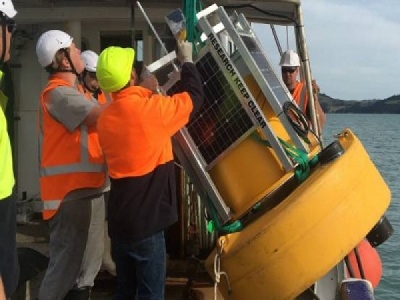
Posted on May 29, 2018
By Chris Hutching, stuff
Ngai Tahu has won concessions from Lyttelton Port through mediation over a resource consent for a big dredging programme due to begin soon.
One of the largest dredges in the world will arrive in July to begin deepening the shipping channel for mega-ships capable of doubling freight capacity.
Ngai Tahu’s objections focused on preventing sediment dumping at Godley Head, tighter environmental controls in Lyttelton Harbour, and a reduced consent period.
The port company will also make payments to local Ngai Tahu hapu to enhance access to mahinga kai, and undertake research and development.
An initial payment of $50,000 must be paid within one month followed by 24 annual payments of $25,000
One of the significant concessions from the mediation with Ngai Tahu was the reduction from a 35-year resource consent to 25 years.
“It is important to note that while an agreement has been reached, the Ng?i Tahu parties do not fundamentally support the dredging and disposal of spoil, but nevertheless the appeal is resolved as a pragmatic solution,” Ngai Tahu said.
One condition requires Lyttelton Port to cease dumping dredge spoil from a previous consent at Awaroa/Godley Head, Livingstone Bay, Breeze Bay and Mechanics Bay, which were important breeding grounds for kaimoana, Ngai Tahu said.
Stricter environmental controls include requiring the company to provide a programme of its proposed dredging one month in advance to Ngai Tahu, and to liaison groups including mussel farm owners Ngai Tahu and Sanford, and Environment Canterbury.
Ad Feedback
Lyttelton Port must also provide them with records of the timing, quantities and location of dumped sediment.
The reports must describe the dredging methodology, dredges used, equipment maintenance, outdoor lighting to reduce bird strike, conflicts between any harbour sporting events, the turbulence reducing valve, training of personnel involved to recognise any archeological material, management of waste, refuelling, and proof on request that the contractor and staff understand their responsibilities.
Any archeological discoveries require work to halt and authorities alerted.
A marine mammal observer must keep records and be trained by a qualified marine mammal expert. Guidelines will determine speed limits to reduce chances of striking whales, particularly southern right whales.
The dredge operator must also describe methods to reduce noise that might affect marine mammals under a plan prepared by a qualified person.
A biosecurity plan requires a description of the dredge vessel’s speed, maintenance, cleaning, last dry docking and anti-fouling plus key sources of risk from ballast and biofouling
Environmental monitoring requires a report before and a review after dredging to show how adaptive management is minimising risk of elevated turbidity (suspended sediment) that would affect mussel farms.
The reports must confirm the level of suspended sediment, location of monitoring equipment, 15 beach shore monitoring stations checked before and after dredging, and a report on how the environment is responding.
A series of other conditions requires six monitoring buoys, and 14 ecological stations
An independent peer group of scientists will conduct peer reviews, and Lyttelton Port will maintain real time data on its web site recording turbidity levels.
Source: stuff





